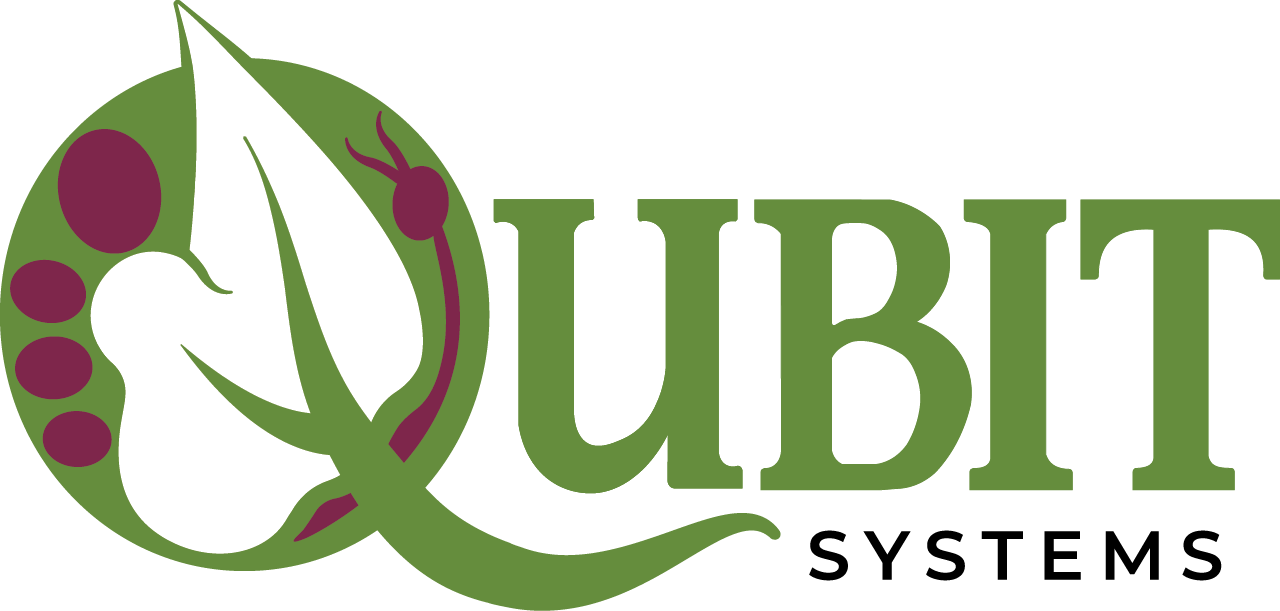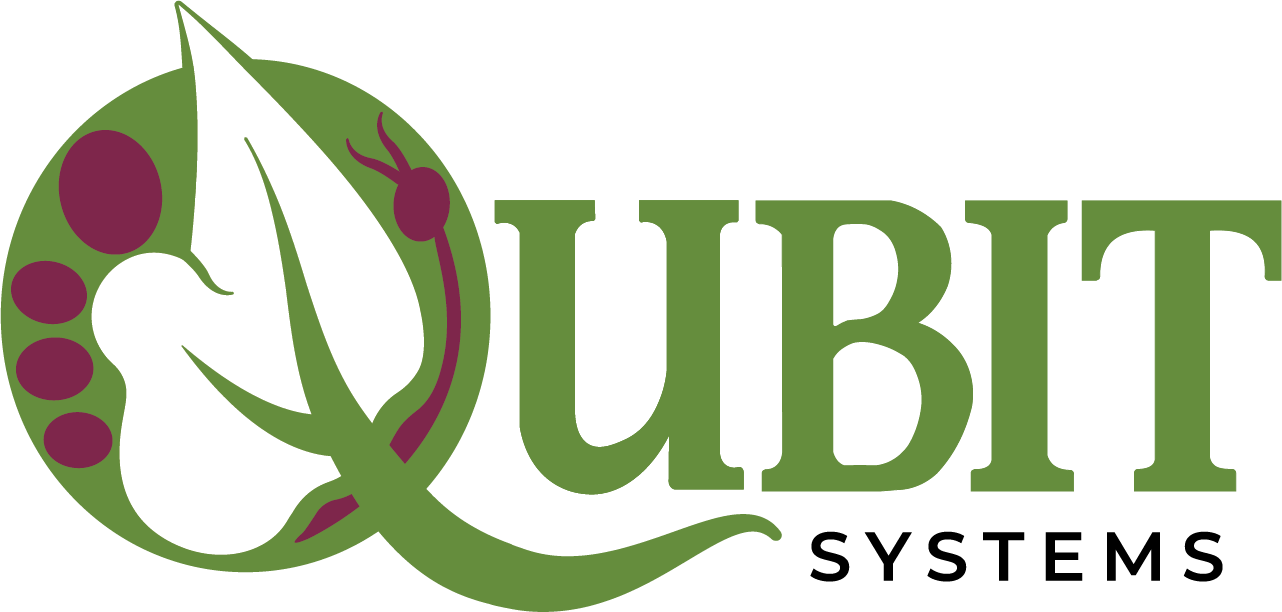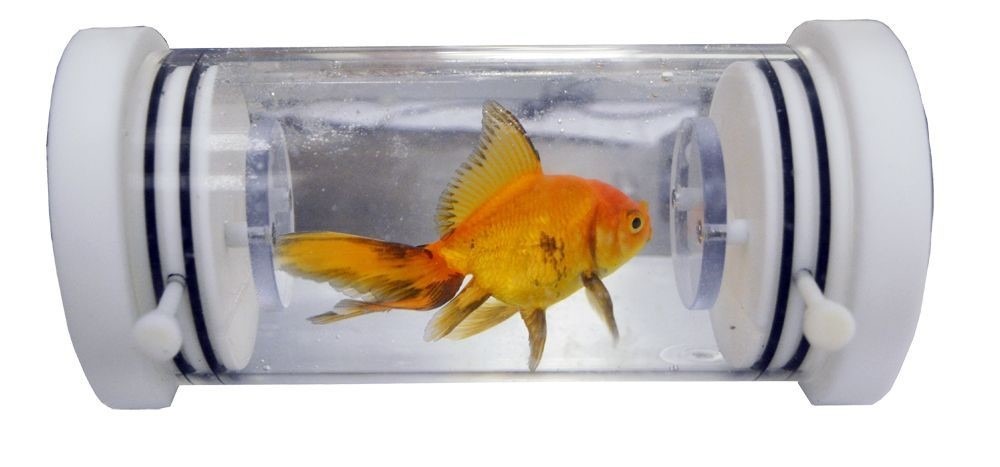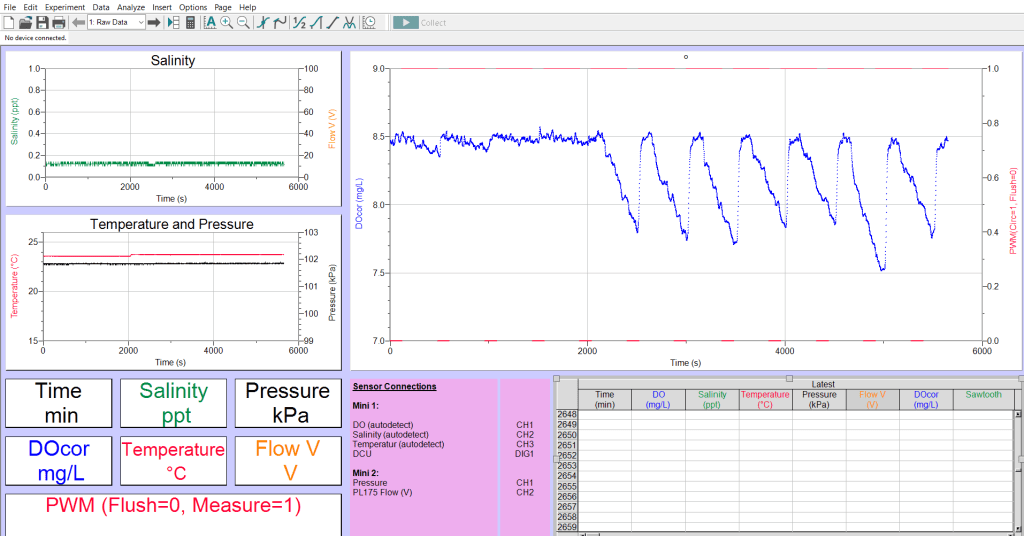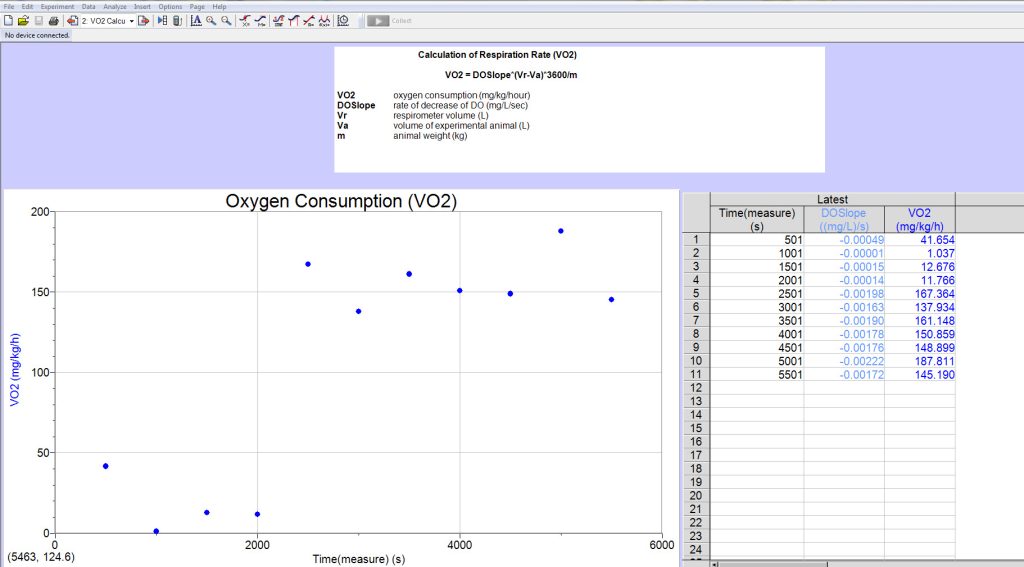The Q-Box AQUA Aquatic Respirometry Package is designed for measurements of metabolic rate (VO2) as a reduction in Dissolved Oxygen inside the respirometry chamber with an aquatic animal. Both vertebrates and invertebrates may be studied. Q-Box AQUA uses the principle of intermittent flow respirometry. Up to 4 aquatic chambers/samples may be monitored in a single experiment with additional components. All the chambers would experience the same experimental conditions. Contact Qubit for more information on the multichannel AQUA system.
- Optical DO Probe
- Small Respirometry Chamber (140ml, 3.8cm ID, 15.3cm long)
- Large Respirometry Chamber (660ml, 8.2cm ID, 16.7 cm long)
- mini-AQUA chamber (9ml, 1.6 cm ID, 4.5 cm long)
- micro-chamber (1.23ml, 1.5 cm ID, 0.85cm depth) in mini-AQUA
- Temperature & Salinity Probe for Water Bath
- Liquid Pump (1 LPM or 0.1LPM in mini-AQUA) & 3-Way Valve
- Digital Control Unit for 3-Way Valve Control
- 6 Channel Data Interface
- Data Acquisition Software
- Absolute Pressure Sensor
- Rugged Weatherproof Case
- Aquatic Respirometry Studies
- Aquatic Vertebrate and Invertebrate Research
- Lab and Field Studies (with optional battery pack)
- G217 Large Respiration Chamber (8.2cm ID, 16.7cm L, 660ml)
- G216 Small Respiration Chamber (3.8cm ID, 15.3cm L, 140ml)
- G210 mini-AQUA chamber (1.6cm ID, 4.5cm L, 9ml)
- G223 mini-AQUA micro-chamber (1.5 cm ID, 0.85cm depth, 1.23ml)
- S122 Optical DO probe
- A260 Flow-Through vessel for DO probe
- PL175 Liquid Pump (1LPM)
- PL100 Liquid pump (0.1LPM) mini-AQUA
- A236 Three-Way Valve
- C200 Digital Control Unit for 3-Way Valve
- A750 Simple Plastic Water Bath
- S132 Temperature Probe for Water Bath
- S181 Absolute Pressure Sensor
- S130 Salinity Probe
- 6 Channel Data Acquisition Interface (C610 x 2)
- C901 Software and C404 Experimental File
- Rugged Weather-proof case for Storage and Transport
- Q-Box AQUA Accessory Kit (tubing, connectors, filters)
- User Manual
- A249 Battery Pack (optional)
- D H Hudson (2021) Metabolic response to temperature stress in the Colombian freshwater crab Neostrengeria macropa (H. Milne Edwards, 1853) (Decapoda: Brachyura: Pseudothelphusidae). Journal of Crustacean Biology, Feb 2021, 1-7 doi:10.1093/jcbiol/ruab002
- Rahi L. (2021)Temperature induced changes in physiological traits and expression of selected candidate genes in black tiger shrimp (Penaeus monodon) larvae. Aquaculture Reports 19 https://doi.org/10.1016/j.aqrep.2021.100620
- Rahi L et al. (2020) Impact of salinity changes on growth, oxygen consumption and expression pattern of selected candidate genes in the orange mud crab (Scylla Olivacea). Aquaculture Research 51: 4290-4301 https://doi.org/10.1111/are.14772
- Lucey NM, Collins M, Collin R (2020) Oxygen-mediated plasticity confers hypoxia tolerance in a corallivorous polychaete. Ecology and Evolution 10: 1145-1157 https://doi.org/10.1002/ece3.5929
- Huang M et al. (2020) The Influence of Atrazine on the Growth, Development and Oxygen Consumption of Pelophylax nigromaculatus Tadpoles. Nature Environment and Pollution Technology 19: 1311-1317
- Lamarre SG et al. (2019) Interrelationship between contractility, protein synthesis, and metabolism in mantle of juvenile Cuttlefish (Sepia officinalis). Frontiers in Physiology 10: 1051 doi: 10.3389/fphys.2019.01051
- Rangel RE, Johnson DW. (2018) Metabolic responses to temperature in a sedentary reef fish, the bluebanded goby (Lythrypnus dalli, Gilbert) Journal of Experimental Marine Biology and Ecology 501 Pages 83-89https://www.sciencedirect.com/science/article/pii/S0022098117305130
- Black MN et al. (2017) Environmentally relevant concentrations of amine-functionalized copper nanoparticles exhibit different mechanisms of bioactivity in Fundulus Heteroclitus in fresh and brackish water. Nanotoxicology 11: 1070-1085 https://www.tandfonline.com/doi/abs/10.1080/17435390.2017.1395097
- Keogh CL et al (2017) The double edge to parasite escape: invasive host is less infected but more infectable Ecology, 98(9) 2241–2247
- Callaghan NI. Et al (2016) Zinc oxide nanoparticles trigger cardiorespiratory stress and reduce aerobic scope in the white sucker, Catostomus commersonii NanoImpact 2: 29–37
- Lamarre SG. et al. (2016) Metabolic rate and rates of protein turnover in food deprived cuttlefish, Sepia Officinalis (Linnaeus1 1758). Am J Physiol Regul Intregr Comp Physiol 310: R1160-R1168
- Bessemer RA. Et al. (2015) Cardiorespiratory toxicity of environmentally relevant zinc oxide nanoparticles in the freshwater fish Catostomus commersonii Nanotoxicology 9: 861-870SHAR
Q-Box AQUA Operation
The animal is placed in a respirometry chamber and the decrease in dissolved O2 due to consumption by the animal is measured. Dissolved Oxygen data corrected for salinity, temperature and pressure is displayed in the software and used to calculate on the go values of oxygen consumption rate (VO2). Measurements are made sequentially without removing the animal from the chamber. The chamber is flushed with fresh water between measurements. These intermittent flow measurements of VO2 overcome disadvantages of continuous closed respirometry where dissolved O2 level in the chamber may decrease to a hypoxic level. All of the components of the Q-Box AQUA Package are housed in a rugged weather proof case for easy transport and storage.
During an experiment, water is circulated through the animal chamber and the flow-through vessel with the optical DO probe by the liquid pump. A 3-way valve, controlled by Digital Control Unit (DCU), and the software determines if the system is in circulation or flushing mode. During the circulation mode, respiration measurements are made and during flush mode, the animal chamber is being flushed with oxygenated water from the water bath. The circulation-flush cycle is repeated until the experiment is terminated. The time of the flush and circulation phase are selected by the user in the software.
mini-AQUA for small samples
For aquatic respirometry measurements of small fish and insect lavae (~1g) Qubit offers a mini-AQUA package, a modified version of the Q-Box AQUA with a small aquatic respirometer chamber (9ml) and components for a smaller total volume system. mini-AQUA package also features a micro-chamber (1.23ml in volume) with DO probe inserted in the top portion for measurements of VO2 of very small samples such as larvae and juvenile fish less than 0.5g. The micro-chamber is used in the intermittent stop flow mode resulting in higher sensitivity and resolution of the system.
Q-Box AQUA Software
Testimonial
“We have been using the Q-Box AQUA respirometry package for a year and have been impressed with the quality and versatility of the system. Although designed for teaching, we have found it to be more than adequate for basic research applications on both fish and cephalopods. The mechanical systems are well designed and easily serviced and the software is intuitive and flexible enough for use in diverse applications. The technicians at Qubit are outstanding; they were able to modify the system to suit our particular needs and they have always been quick to respond when technical support was required. The fact that Qubit ships the system in a protective case was also a big plus for field work!”
Dr. Tyson MacCormack, Biology Department, Mount Alison University, New Brunswick, Canada
